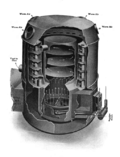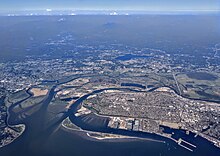Top 10 Tips for Maintaining and Safeguarding Gas Furnaces - boiler repair
- pressure switch calibration
1. **Schedule Regular Professional Maintenance**
Just like any other major appliance, your gas furnace requires regular check-ups by a qualified technician. It’s recommended to have professional maintenance performed at least once a year before the heating season begins. A skilled technician can thoroughly inspect, clean, and tune-up your furnace to ensure it operates efficiently and safely.
2. **Replace Air Filters Regularly**
The air filter in your furnace plays a crucial role in maintaining indoor air quality and ensuring proper airflow. Dirty filters can cause your system to work harder than necessary, leading to increased wear and tear on components. To prevent this issue, check filters monthly during peak usage times and replace them as needed – typically every 90 days.
3. flue pipe sealing **Keep the Area Around Your Furnace Clear**
Safety around a gas furnace is paramount; therefore, you should always keep combustible materials such as paper products, chemicals, or flammable liquids away from the unit. Additionally, make sure there's adequate space around the furnace for proper ventilation.
4. **Inspect Vents & Chimneys for Blockages**
Blocked vents or chimneys can lead to dangerous carbon monoxide buildup inside your home as well as affect furnace performance. Periodically examine these areas for debris such as leaves or bird nests that could obstruct exhaust flow.
5. **Install Carbon Monoxide Detectors**
Carbon monoxide (CO) is an odorless and colorless gas that can be lethal at high levels if not detected early enough. flame sensor cleaning Install CO detectors near sleeping areas and on each floor of your home to alert you of any potential issues with combustion gases from the furnace.
6. **Monitor Thermostat Performance**
Occasionally test your thermostat to make sure it’s functioning correctly since it controls when and how much heat is produced by the furnace. boiler repair If temperatures seem off or if there are discrepancies between settings and actual room temperature, it may indicate an issue with either the thermostat or the heating system itself.
7. **Check Flame Color & Appearance**
A healthy natural gas flame should be blue with perhaps just a small tip of yellow at its center; this indicates complete combustion of gas without excess carbon being released into your home environment—or worse yet—into its own internal components where they could cause damage over time!
8 .**Ensure Proper Drainage**
Many modern high-efficiency furnaces produce condensation which must be drained away properly in order not only avoid water damage but also maintain efficiency standards set forth by manufacturers themselves under warranty conditions etcetera... Make sure drains are clear so water flows freely away from unit without pooling anywhere nearby whatsoever!
9 .**Educate Everyone In The Home About Furnace Safety**
All household members should know basic safety measures including what signs might suggest malfunctioning equipment so everyone knows how respond appropriately whether that means evacuating immediately calling emergency services right after depending upon circumstances presented them moment notice…
10 .**Have An Emergency Plan In Place**
In case something goes wrong with your heating system—especially during winter months when cold weather hits hardest—you'll want know exactly who call get things fixed quickly effectively! Have contact information readily available local HVAC professionals who offer emergency repair services along instructions shutting down system case need arises unexpectedly...
By following these top ten tips consistently throughout life ownership residence equipped one more step towards guaranteeing comfort warmth family while protecting investment made purchase installation upkeep critical piece infrastructure called "home".










